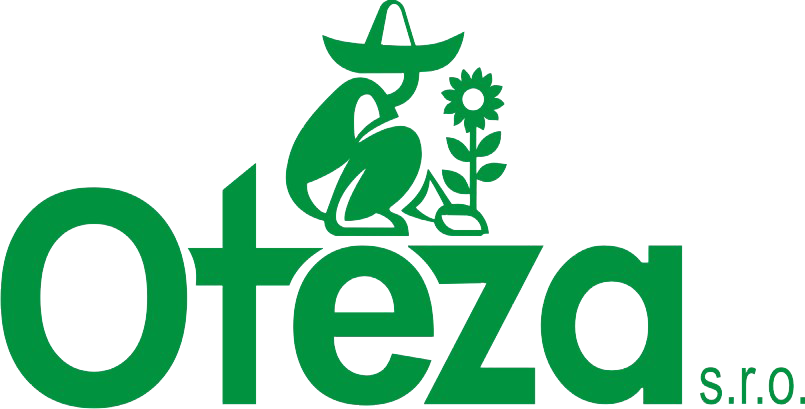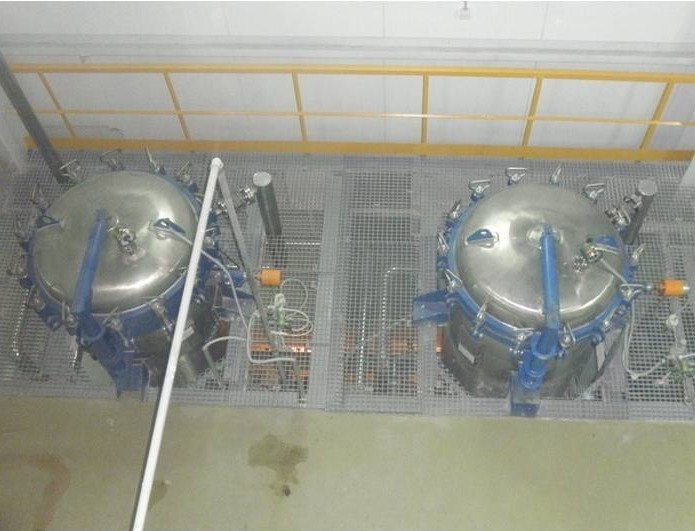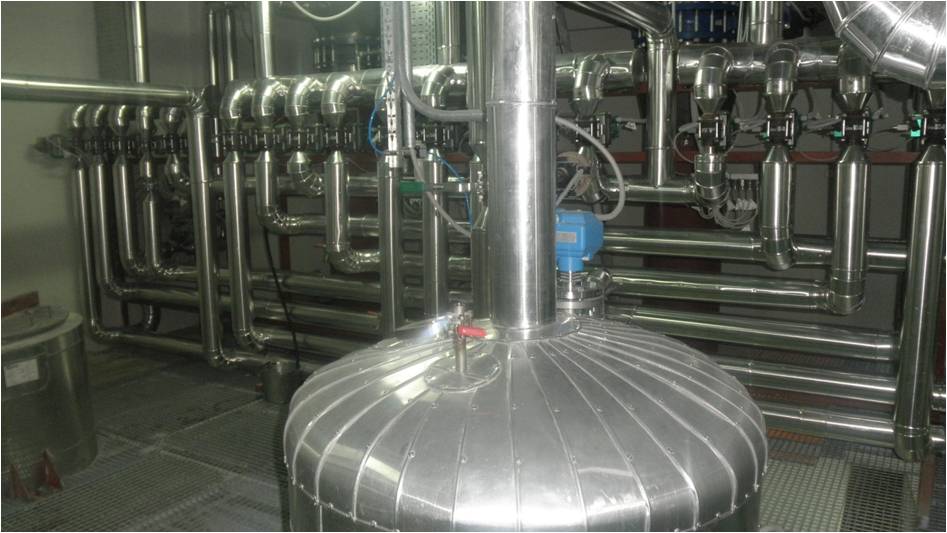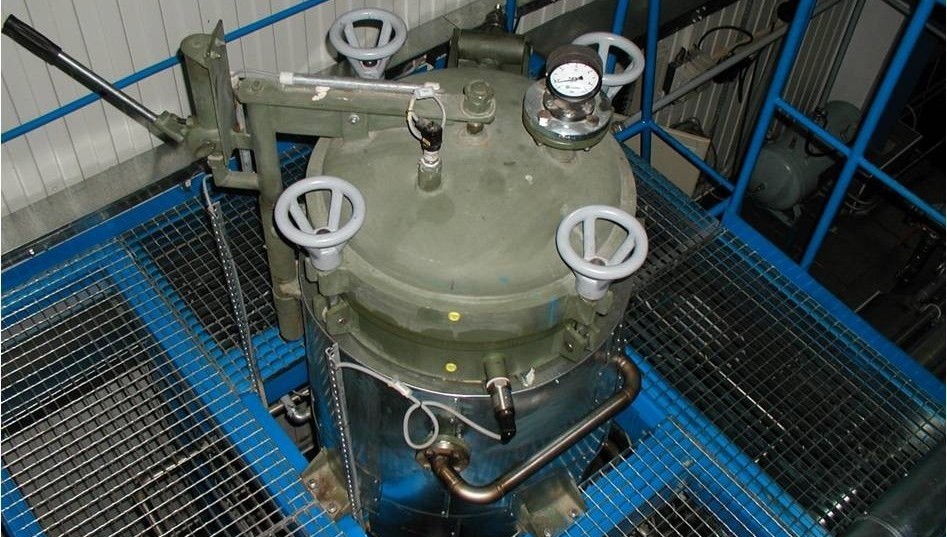Bleaching
Bleaching fats and vegetable oils is a part of comprehensive refining technology. The natural colour of fats comes from chlorophyll and from carotenes or lipochromes. The partial bleaching of oil occurs in degumming, but it is not sufficient and therefore bleaching based on the affinity of pigment dissolved or dispersed in oil to the surface some of the adsorbent is used. The interaction between the oil and adsorbent results in adsorption of lipochromes, impurities and degradation products into the adsorbent, which is then filtered from the oil.
The technology works continuously and is fully automated.
Bleaching is divided into three main parts:
- Dry degumming
- Bleaching
- Filtering
Dry degumming:
The principle is based on the addition of a certain amount of acid into the starting oil. This will create appropriate conditions for the coagulation of phospholipids, which are then filtered out in the third stage with the help of an adsorbent or filtering substance. This technology reduces the phosphorus from about 50 ppm to below 10 ppm.
Bleaching:
In this stage the oil is bleached to the desired colour code by adding bleaching clay to oil in the reactor. The process is carried out under reduced pressure to stop the oxidation processes. The oil is then homogenised, vacuumed and prepared for filtration.
Filtering:
Oil is stripped of the adsorbent agents and pigments with filtration. Filtration takes place on manually operated filters (filter presses) or is fully automated using the AMA filters. They are mainly used for larger capacities.
Manual filters (filter presses) are used for smaller operations, up to approximately 1000 kg oil/hour.
Start-up, filter filling, and filtration itself is overseen by the operators. Filtration is carried out on a layer of adsorbent (or filtering agent) on the filtration cake. When the filter clogs, the operators must empty the filter, have it dried and cleaned of filter cake.
This type of filter can be extruded and dried by air only because the polypropylene construction of the filtration slabs and sheets does not tolerate the temperature of the steam.
Automatic filters /AMA filters/ are used for higher performance. Plate, pressure, sedimentation filter is characterized by the fact that the actual filtration is carried out on the layer of suspended solids and adsorbent – on the filtration cake. Therefore, it is not desirable to remove dispersed silica before filtration (for example by sedimentation).
The filter works in fully automatic mode. It can be extruded and dried by air and steam, because stainless steel sieves are used for filtering.
The steam is used to mitigate the losses in the filter cake and where there is danger the filter cake may be flammable.
Description of the bleaching process:
After being cold-pressed, crude filtered oil begins the process and must be heated. The oil is pre-heated by being pumping through the recuperative heat exchanger, and is then heated to the desired temperature in the exchanger with the heat-bearing oil.
Acid is added using a dynamic mixer, coagulating phosphatides and preparing them for filtration.
Prior to entry into the bleaching reactor, the heated oil is measured. After oil is added to the reactor, a mixture of oil with bleaching clay previously prepared in a mixing reactor is also added to the reactor. The batch quantity is fed by an automatic dosing device. The oil is thoroughly mixed with bleaching clay in the reactor. Stirring prevents sedimentation of silica, and provides for uniform distribution of the adsorbent in the oil. Sometimes a filter substance can be added to the reactor to improve and accelerate filterability. The oil is kept heated at the reaction temperature.
A vacuum is formed in the reactor using a vacuum set, and under low pressure water evaporates from the oil which then is condensed in the condenser as waste water.
Next, the mixture of oil and clay is transferred to the homogenisation vessel with negative pressure. The oil is pumped from this container into a filter with filter sheets or sieves.
Mixing ensures the oil and adsorbent are uniformly delivered into the automatic (manual) filter.
The automatic (and manual) filter works in cycles:
- Filling
- Accumulation
- Filtering
- Extrusion
- Drying
- Regeneration
A bag filter is located in the pipe behind the automatic filter, which is designed to capture any minimal leak of the debris from the main filter and when the main filter is damaged.
During the regeneration cycle the filtration cake drops from the automatic filter into the hopper under the filter. The filtration cake can be used in the oilcakes or returned to the presses.




